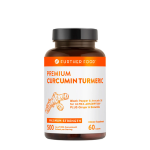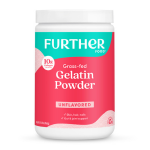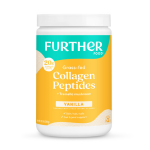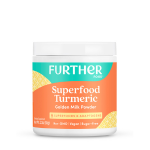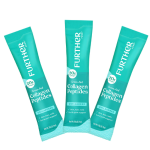Six years ago I began to
experience symptoms linked to overgrowth of yeast in my body. While I don’t know exactly what caused my symptoms or how long they were brewing, I do know that overexposure to antibiotics and a high sugar, high carb diet for most of my life was a major contributor. One common type of yeast is
candida, and it is normal and present in all healthy bodies, but it becomes problematic when its growth gets out of control (as it was in my case). One of the things I did to heal was go on a
candida-combatting diet. At first, I had no idea what I was doing! But after much research and trial and error, I found a diet that works for me. While there are many versions of the candida diet, the one thing everyone can agree on is that sugar is the arch nemesis on a candida diet.

-
Sugar: The biggest thing about any candida diet is eliminating sugar. This means anything from white refined sugar to sugar that comes from fruits or starchy vegetables. It really depends on each person’s symptoms and how long they have been managing them. When I first started my candida diet I gave up sugar, refined grains and fruit; but somehow I thought it was ok for me to eat 3 dates per day! Dates are so sweet and have loads of sugar, even if it’s natural sugar. But that’s what tends to happen when we start something new; we experiment and find our way. Since then, I’ve cut the dates out too. Some people find they can eat sweet potatoes and low-glycemic berries on a candida diet. Other people find that even the smallest amount of whole grains aggravates their symptoms. I find that it’s best to start off eliminating as much as possible, and then add things in and see how you do.
Today, I tend to follow what I call a
vegan-leaning paleo diet. The vegan leaning part is just a personal choice (I’ve been vegan or vegetarian for over 26 years). For me that means:
- Eating vegetables, and lots of green ones at that!
- Getting plenty of healthy fats from almonds, walnuts, pumpkin seeds, eggs, sunflower seeds and tahini.
- Staying away from fruit, legumes and grains, (even whole grains because my body is incredibly sensitive to sugar). Quinoa is technically a seed, and I do ok with that now.
After six years, I have a much better handle on my
candida diet. I would say that I cook at least 90% of the food I eat throughout the week. This has been the easiest way for me to make sure I feel my best by following my diet. Stress is a huge factor for people managing candida, so I try my best to be prepared. As my symptoms have improved over the years I’ve re-integrated quinoa into my diet, but the bulk of all my meals still consists of non-starchy vegetables.
I’m still human!
No one is perfect-- definitely not myself! Sometimes I eat
fruit, and if I eat out, I might have some brown rice or starchy vegetables. And sometimes I’ll eat a
gluten-free cookie (gasp!). While I used to call this “cheating," I find that that has such a negative connotation and reinforces the idea of deprivation, which I find really unhelpful. Instead, I just know that it works best for me to balance what I know works for my health, and what will keep me mentally at ease.
For some delicious candida-combatting, sugar-free recipes, check these out!
Omega-Packed Kale Salad
Baked Eggs Shakshuka
Seasonal Veggie and Umeboshi Soup
 Note: PLEASE consult with your doctor before making any changes to your diet or medications. The material on this site is provided for educational purposes only, and is not to be used for medical advice, diagnosis or treatment.
Note: PLEASE consult with your doctor before making any changes to your diet or medications. The material on this site is provided for educational purposes only, and is not to be used for medical advice, diagnosis or treatment.

 Note: PLEASE consult with your doctor before making any changes to your diet or medications. The material on this site is provided for educational purposes only, and is not to be used for medical advice, diagnosis or treatment.
Note: PLEASE consult with your doctor before making any changes to your diet or medications. The material on this site is provided for educational purposes only, and is not to be used for medical advice, diagnosis or treatment.








